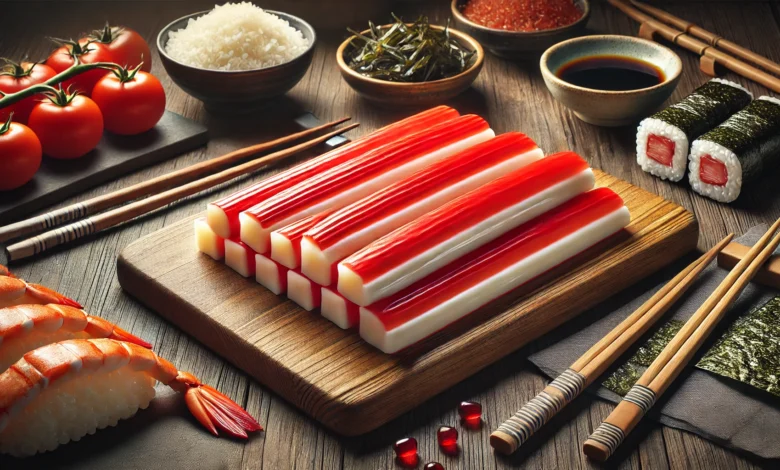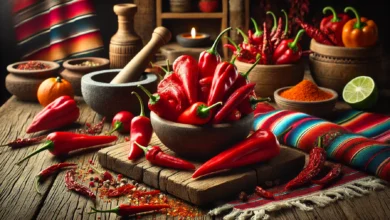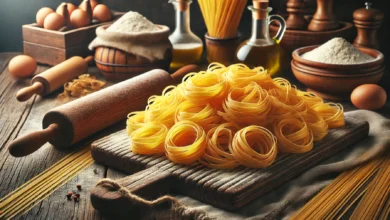Kanikama: The Delicious World of Imitation Crab Meat

Introduction
Manufacturers make Kanikama, or imitation crab, using surimi, a paste of ground white fish. This resembles natural crabmeat flavor and texture and is good for sushi and many other seafood products. Appealing and powerful, Kanikama subdues every nationality’s food.
A question as old as the hills that could be troubling you right now ‘What is within my beloved sushi rolls?’ Then it is time to learn more about it, the lawyers’ imitation crab meat, and probably enjoy the feeling of the sea in your food at a relatively cheaper cost.
People commonly know the second kind of surimi as imitation crab, and chefs frequently use it in kitchens worldwide. Producers make this type of imitation crab meat from surimi, a paste created from minced white fish. Producers introduced it to the Japanese as a cheaper alternative to crab, and it has since become popular in sushi and seafood dishes globally. If you love sushi or are new to this type of cuisine and want to taste crab without overpaying, I recommend trying it.
The Origins: A Japanese Innovation
Japanese producers created it in the early 1970s in response to the demand for a lower-priced crab meat alternative. The invention employed surimi which is paste prepared out of white fish such as the Alaskan pollock to replicate the taste and texture of crab. This innovation made it possible for people to eat foods with crab flavor without having to pay through the nose. Today, people around the world enjoy it as a flavorful component of Japanese food.
How Manufacturers Make It: The Production Process
Manufacturers start by obtaining surimi, made from a paste of finely ground white fish. They combine this with eggs, starch, seasoning, food and, even crab extract to from a product that resembles crab meat in look and in taste. Upper side is painted with red food coloring to give it resemble of crab. It is worth admitting that this gradual process guarantees the product – it has the looks and taste like real crab and remains a popular type of seafood.
Kanikama in Sushi: A Popular Ingredient
Chefs use it in sushi products, especially the California roll and many others that have emerged in the market. They have a very light taste and their flesh is similar to that of crab which also makes it a good fit for sushi rice and seaweed. This is because it does not break the bank and is somewhat flexible for sushi chefs and even sushi lovers to work with. It enables the making of tasty rolls with the semblance of real crab; thus, it is useful in the sushi preparation.
Kanikama vs. Real Crab: A Comparison
Although one of the main selling points of the KD snack food, Kanikama, is that it tastes and feels like real crab, there are differences. It has a rather sweet, bland and on the whole – Fisher like taste without the density of real Kanikama crab. Hence it provides a paste like structure, its texture is smoother unlike real crab which is flaky and delicate. Nevertheless All things considered Kanikama becomes a good substitute, for those who wish to taste crab and do not wish to pay the amount that it will cost.
Creative Uses of Kanikama in Cooking
People may use Kanikama in sushi, but they don’t limit it to just sushi preparation. Cooks can add them to various dishes, such as seafood salads or pasta dishes. Why not use Kanikama in an omelet, it will be different from the usual egg and bacon breakfast, or even in Vietnamese spring rolls for a starter. Because of this characteristic, Kanikama is ideal for culinary innovators who want to experiment with various tastes and forms of their meals.
The Global Appeal of Kanikama
People worldwide now enjoy Kanikama, making it one of the most common international delicacies. Currently, chefs from different parts of the world value it since it is cheap and can be applied in foods with different origins. Crab flux is another important ingredient prepared for imitation of crab flavor; valuable in the international cuisine, it can be regarded as universally popular. People now enjoy Kanikama in both classic Japanese recipes and contemporary innovations.
FAQ’s
What makes up Kanikama?
Manufacturers make Kanikama from surimi, a paste of finely ground white fish.
Is Kanikama the same as real crab?
No, Kanikama is an imitation that mimics the taste and texture of crab.
How do you use Kanikama in cooking?
Use Kanikama in sushi, salads, pasta, and other seafood dishes for a crab-like flavor.
Is Kanikama healthy?
Yes, it is low in calories and fat, making it a healthy seafood option.
Can you eat Kanikama raw?
Yes, Kanikama is pre-cooked and can be eaten straight from the package.
Conclusion
Kanikama, also referred to as imitation crab, is thus an economical option of getting to have a taste of crab in more food preparations. This has made it common in the preparation of food all over the world in foods such as sushi rolls and seafood salads making it a widely sought after seafood part. Although it does not taste or feel like real crab, Kanikama is a good imitation for people looking for a budget friendly crab experience. To the professional and amateur chef alike, Kanikama extends the challenge to discover more of what the product can do for your dishes and add the flavor of the sea to your home-cooked meals.



